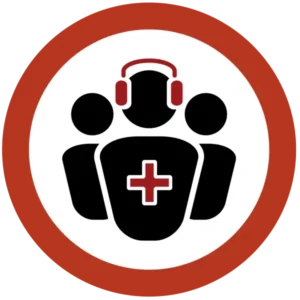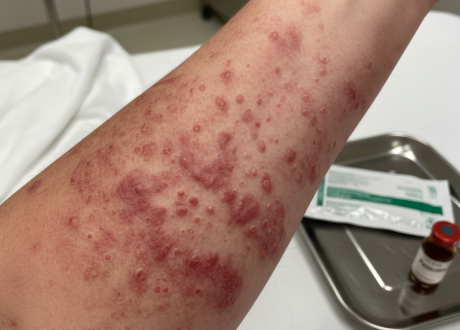Podcast: Play in new window | Download
 This learning material is sourced from Emergency Medicine Cases and has been published here with permission as per creative commons copyright”
This learning material is sourced from Emergency Medicine Cases and has been published here with permission as per creative commons copyright”
A whopping 1 billion doses of acetaminophen (or paracetamol, as it’s called in some countries) are taken safely each year. With that much acetaminophen being ingested it’s no surprise that about 10,000 people in Canada every year overdose on it. Some acetaminophen overdoses are easy to diagnose and relatively straightforward to manage in the ED. But there are many points along the way of taking care of these patients where pitfalls can rear their ugly heads leading to less than ideal outcomes. We’re hoping that by the end of this episode you will recognize all the places where it is easy to trip up in managing these patients and provide stellar care for your next acetaminophen overdose patient. Our guest expert toxicologists Dr. Emily Austin and Dr. Margaret Thompson answer questions such as: how is massive acetaminophen overdose a totally different toxidrome compared to non-massive overdose? Which patients are the ones that we are most likely to miss and have poor outcomes? What are the common ways in which we misinterpret the Rumack-Matthew nomogram? What are indications for fomepizole and dialysis after acetaminophen poisoning? Is hyperphosphatemia the best predictor of need for liver transplant in acetaminophen poisoning? and many more…
Cite this podcast as: Helman, A. Austin, E. Thompson, M. Ep 180 Acetaminophen Poisoning – Pitfalls in Assessment and Management. Emergency Medicine Cases. March, 2023. https://emergencymedicinecases.com/acetaminophen-poisoning-pitfalls-assessment-management. Accessed May 13, 2023
3 clinical presentation scenarios of acetaminophen poisoning
It is useful to think of the clinical presentation as one of the 3 scenarios to help guide management:
- Single recent acetaminophen overdose with purposeful intent
- Supra-therapeutic acetaminophen overdose over prolonged period over time or staggered, intended or unintended
- Massive acetaminophen overdose
Most acetaminophen poisoning deaths are a result of either a delayed presentation after deliberate overdose, or from supra-therapeutic dosing for fever or pain over several days.
Pitfall #1 is failing to recognize the seriousness of an acetaminophen overdose when it is delayed or in patients who have been taking supra-therapeutic doses over several days
Acetaminophen poisoning is sometimes missed because often patients do not know that many medications include acetaminophen such as Percocet, NyQuil/DayQuil, Excedrin, Alka-Seltzer Plus, Mucinex, Robitussin, Goody’s.
Pitfall #2 is neglecting to ask patients about all the medications they take including over-the-counter ones and exactly how much they take of each; supra-therapeutic dosing of over-the-counter medications may be the first clue to a life-threatening acetaminophen overdose
Patient factors that may augment toxicity in the setting of an acetaminophen overdose include:
- Additional hepatotoxic medications/medications that are known to potentiate liver toxicity of acetaminophen (e.g. Phenytoin, Trimethoprim/sulfamethoxazole)
- co-ingestions which may require additional treatment
- chronic alcohol use
- malnutrition
- chronic liver disease
Pitfall #3 is failure to recognize patient factors that may potentiate or augment acetaminophen toxicity including other medications, co-ingestions, chronic alcohol use and malnutrition.
Other factors on presentation that are associated with poor outcomes or death include:
- Hypoglycemia
- Coagulopathy
- Lactic acidosis
- Altered LOA
- Bradycardia
- AKI/Rhabdomyolysis
- Hypothermia/Hypothermia
The stages of acetaminophen poisoning occur after a single recent overdose

Laboratory investigations and risk stratification in acetaminophen poisoning
Have a low threshold for obtaining serum acetaminophen levels in patients with any overdose self-harm attempt, unexplained altered level of awareness with metabolic acidosis and unexplained elevated liver enzymes. The typical threshold for toxicity is 200 mg/kg acetaminophen for the acute one time dose.
All patients with poor outcomes after acetaminophen overdose will have elevated liver enzymes by the 24 hr mark. However, in the first 12hrs hours after acute ingestion, liver enzymes are expected to be normal.
Pitfall #4 is assuming the patient has not taken a life-threatening overdose of acetaminophen if their AST and ALT are normal or only mildly elevated; remember that liver enzymes are usually normal in the first 12 hours after an overdose.
Marked hyperbilirubinemia (>10 mg/dL) may cause a false-positive acetaminophen level, usually in the low range (0-30 ug/ml). Bilirubin elevation in this range usually is not due to acetaminophen, so other causes of liver injury should be considered.
Pitfall #5 is assuming that an extreme elevated bilirubin is due to acetaminophen poisoning and not recognizing that extreme elevations in bilirubin may cause a false positive acetaminophen level.
AST levels > 1000 IU/L are more likely to result from acetaminophen poisoning than from chronic hepatitis or alcoholic liver disease and rise earlier than ALT levels in acetaminophen poisoning.
The APAP x AST multiplication product, calculated at the time of presentation and after several hours of antidotal therapy, holds promise for risk stratification after acetaminophen overdose. It requires neither graphical interpretation nor accurate time of ingestion – two limitations to current risk stratification.
Elevated INR may be biphasic – while elevated INR on Day 3 or later is a reliable sign of severe liver toxicity, mild elevations of INR may be seen early after ingestion on Day 1 and do not reflect severe liver toxicity, but rather, are related to the circulating acetaminophen and typically resolves without specific treatment.
The King’s College Criteria for acetaminophen toxicity may help risk stratify patients and remind us of lab tests to order. It includes pH, INR, Cr, encephalopathy, lactate and phosphate.
Hyperphosphatemia has been shown to be a fairly accurate predictor of need for liver transplant after acetaminophen poisoning that may be particularly useful in delayed/late presentations.
The Rumack-Matthew nomogram should be interpreted only the setting of a single recent overdose
The Rumack-Matthew nomogram was intended for patients with a single acute recent (within 24hrs) overdose of regular release acetaminophen. This does not include patients with an unknown time of ingestion, chronic overdoses, staggered overdoses nor repeated supra-therapeutic ingestions.
Only for the patient with a single ingestion within 24hrs should the acetaminophen (APAP) level be obtained at 4 hrs post-ingestion or, if later than 4hrs, immediately on presentation to the ED, and plotted on the Rumack-Matthew nomogram. Obtaining levels between 2-4 hrs post ingestion may be helpful because if level is undetectable (essentially zero risk of progressing to toxic levels), but anything other than undetectable requires a repeat draw at 4 hrs. A level above the the line on the nomogram has been shown to be associated with an AST >1000 IU/L which has been suggested as an indication for administering N-acetylcisteine (NAC). In North America, the typical cut-off is 1000 mmol/L at 4 hours post-ingestion, but the cutoff varies across countries.
There are “Extended Release” or “Slow Release” acetaminophen preparations which preclude the usefulness of the nomogram. There might be a delay to complete absorption in the patient who takes a massive overdose, in the patient who takes their overdose with an anticholinergic or opioid. If the initial level is not above the nomogram line at the 4 hour mark, then an 8 hour and 12 hour level should be drawn to be sure. If the initial level is above the treatment line, then repeat acetaminophen levels are not necessary.
Opioids and anticholinergic medications may delay the absorption of acetaminophen and make the the interpretation of the nomogram challenging.
Pitfall #6 is using the Rumack-Matthew nomogram to inform management in patients with delayed presentations >24 hours and chronic overdoses
Pitfall # 7 is misinterpreting the Rumack-Matthew nomogram in the patient who has taken an extended release or slow release preparation, co-ingestion such as opioids or anticholinergics that may alter the metabolism of acetaminophen; consider 8 hour and 12 hours levels in these patients.
ED Management of acetaminophen poisoning – activated charcoal, N-acetylcysteine (NAC), fomepazole, dialysis, consult toxicology early
There is an important role for activated charcoal in the management of recent acetaminophen overdose
50-100 grams or 1g/kg of activated charcoal should be administered to a cooperative, awake patient if they present within 2 hours of ingestion of a toxic dose of immediate release acetaminophen or within 4 hours of immediate release acetaminophen overdoses > 500mg/kg (massive overdose), sustained release formulations or co-ingestion with opioids or anticholinergics.
Indications for N-acetylcysteine (NAC) in acetaminophen overdose
- “Line crosser” on Rumack-Matthew nomogram after single acute ingestion within 24hrs
- Elevated liver transamininases (even in the absence of elevated acetaminophen level) deemed to be caused by acetaminophen overdose
N-acetylcysteine (NAC) needs to be given within 8 hours of a single overdose to be maximally effective
For best effect, NAC should be given within 8 hours of ingestion. There are often significant delays from the time of ordering NAC to the time that the infusion is started. NAC should be a “STAT” medication. Bring this to the attention of your team.
Pitfall #8 is neglecting to administer NAC for late presentations in a timely manner
N-acetylcysteine (NAC) dosing should be discussed with the toxicologist on call as dosing is complex and depends on many factors
There are many NAC treatment protocols that vary in timing, dose, and route (IV/PO), with a paucity of head-to- head comparisons of these protocols. Timing/quantity of ingestion, quick vs extended release, co-ingestions, co-morbidities, lab investigations etc all play a role in determining the best dose of NAC for individual patients. It is reasonable to consult toxicology for guidance on dosing for all but the most straight cases. NAC dosing errors leading to cerebral edema seizures have been reported. It is therefore prudent to develop a clear protocol at your hospital for the more straight-forward cases. Anaphylactoid reactions occur in 8% of patients who receive N-acetylcysteine.
Pitfall #9 is using the same dosing protocol of NAC for all acetaminophen toxic patients; our experts recommend consulting a toxicologist for dosing recommendations for all but the most straight-forward acute overdoses as dosing decision are complicated.
Massive acetaminophen overdose – early coma and lactic acidosis that may require dialysis and fomepizole
Massive acetaminophen overdose (defined as > 500 mg/kg – approximately 30g in an average sized adult – serum acetaminophen several-fold higher than the treatment threshold) typically presents with a very different toxidrome compared to a non-massive overdose. It is characterized by early presentation of coma and lactic acidosis. Typically, acetaminophen levels are extremely high, however, liver transaminases may be normal.
Pitfall #10 is failure to recognize massive acetaminophen overdose in the altered patient with normal liver enzymes; these patients typically present early with coma and lactic acidosis and before liver enzymes begin to rise.
Charcoal is indicated for up to 4 hours after a massive acetaminophen overdose. Consider securing the airway prior to administration of charcoal to prevent aspiration in the altered patient.
N-acetylcysteine (NAC) dosing is higher for massive overdose compared to non-massive overdose – consult a toxicologist for dosing.
Pitfall #11 is administering the usual protocol-driven dose of N-acetylcysteine (NAC) for the massive overdose patient; the dose in massive overdose patients is higher than usual – consult a toxicologist.
Typical indications for dialysis: altered mental status, metabolic acidosis, elevated lactate + acetaminophen level >900mg/L (5960 umol/L)

Source: Gosselin, S. et al. Extracorporeal treatment for acetaminophen poisoning: Recommendations from the EXTRIP workgroup. Clin. Toxicol. 52, 856–867 (2014).
Pitfall #12 is replacing N-acetylcysteine (NAC) with hemodialysis; dialysis should not be considered an alternative to NAC. In fact, patients who are dialyzed require higher doses of NAC (double the dose in patients undergoing intermittent hemodialysis).
Fomepizole in acetaminophen poisoning – an adjunct to NAC to consider in massive overdose
Dose: Fomepizole 15mg/kg IV x1
Mechanism: Early treatment with fomepizole can theoretically prevent liver injury after acetaminophen overdose by halting the formation of NAPQI do and inhibits cellular necrosis which NAC does not do.
The indications for fomepizole based on current evidence is unclear as there have yet to be robust RCTs published. It is reasonable to administer fomepizole in the massive overdose patient, those requiring hemodialysis and those with evidence of significant hepatic injury.
Summary of the 12 pitfalls in acetaminophen poisoning assessment and management
Pitfall #1 is failing to recognize the seriousness of an acetaminophen overdose when it is delayed, staggered or in patients who have been taking supra-therapeutic doses over several days.
Pitfall #2 is neglecting to ask patients about all the medications they take including over-the-counter ones and exactly how much they take of each; supra-therapeutic dosing of over-the-counter medications may be the first clue to a life-threatening acetaminophen overdose.
Pitfall #3 is failure to recognize patient factors that may potentiate or augment acetaminophen toxicity including other medications, co-ingestions, chronic alcohol use and malnutrition.
Pitfall #4 is assuming the patient has not taken a life-threatening overdose of acetaminophen if their AST and ALT or normal or only mildly elevated; remember that liver enzymes are usually normal in the first 12 hours after an overdose.
Pitfall #5 is assuming that an extreme elevated bilirubin is due to acetaminophen poisoning and not recognizing that extreme elevations in bilirubin may cause a false positive acetaminophen level.
Pitfall #6 is using the Rumack-Matthew nomogram to inform management in patients with delayed presentations and chronic overdoses.
Pitfall # 7 is misinterpreting the Rumack-Matthew nomogram in the patient who has taken an extended release or slow release preparation, co-ingestion such as opioids or anticholinergics that may alter the metabolism of acetaminophen; consider 8 hour and 12 hours levels in these patients.
Pitfall #8 is neglecting to administer NAC for late presentations in a timely manner.
Pitfall #9 is using the same dosing protocol of NAC for all acetaminophen toxic patients; our experts recommend consulting a toxicologist for dosing recommendations for all but the most straight-forward acute overdoses as dosing decisions are complicated.
Pitfall #10 is failure to recognize massive acetaminophen overdose in the altered patient with normal liver enzymes; these patients typically present early with coma and lactic acidosis and before liver enzymes begin to rise.
Pitfall #11 is administering the usual protocol-driven dose of N-acetylcysteine (NAC) for the massive overdose patient; the dose for massive overdose is higher than usual – consult a toxicologist.
Pitfall #12 is replacing N-acetylcysteine (NAC) with hemodialysis; dialysis should not be considered an alternative to NAC. In fact, patients who are dialyzed require higher doses of NAC (double the dose in patients undergoing intermittent hemodialysis).








